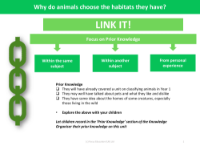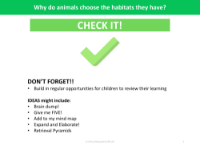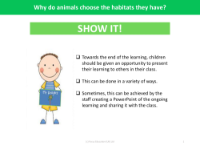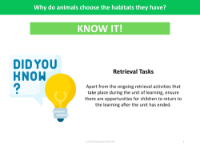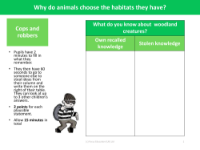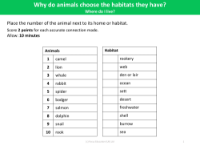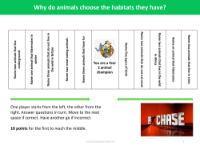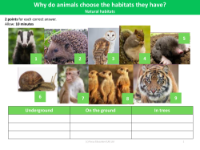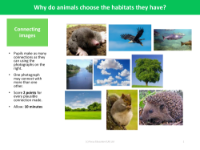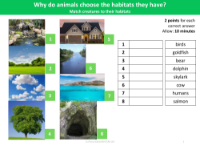Knowledge organiser - Habitats - Year 2

Science Resource Description
In Year 2, students build upon their understanding of the natural world by exploring the concept of habitats within their science curriculum. A habitat is defined as the natural home of an animal, where it can find essential resources such as food, water, and shelter. The term 'rainforest' describes a lush, tropical environment with towering trees, a warm climate, and abundant rainfall, providing a rich habitat for a diverse array of species. In contrast, a 'desert' is characterised by minimal rainfall, resulting in sparse vegetation and a limited number of animal inhabitants that have adapted to these harsh conditions.
The vocabulary extends to 'species', which refers to a group of living organisms sharing common characteristics and thus classified together. Pupils learn about 'ponds' as well, which are smaller bodies of water than lakes and support a vast range of wildlife. They also encounter the term 'indigenous', indicating flora or fauna that originate or occur naturally in a specific area. Key knowledge points include recognizing that animals have habitat preferences, identifying flora and fauna in various habitats, understanding how habitats cater to the basic needs of its residents, matching organisms to their appropriate habitats, comprehending how animals obtain their sustenance, and naming different food sources for animals. This foundational knowledge prepares students for further scientific inquiry into the relationships between animals and their environments.


